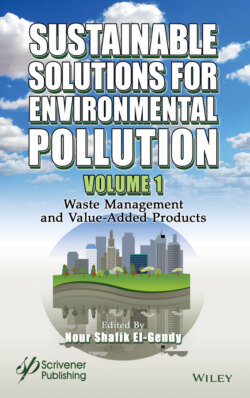Читать книгу Sustainable Solutions for Environmental Pollution - Группа авторов - Страница 19
1.3.2 Bioethanol
ОглавлениеOver the past few decades, there has been a growing interest worldwide to cut transport emissions. Given the rapidly increasing demand for transport fuels, many countries worldwide are now investing in alternative fuels from bio-sources. At present, ethanol (E10, 10% ethanol mixed with 90% gasoline) is the most widely used transport biofuel with potential as a valuable gasoline replacement to reduce transport emissions (Daylan and Ciliz, 2016). Hence, over the last decade, the global bioethanol market has seen rapid growth. Currently, most bioethanol is produced through the fermentation of corn grain using industrial yeast strains (Gomez-Flores et al., 2018). However, pH imbalances introduced by the formation of unwanted metabolites and subsequent inhibition, batch-to-batch inconsistency, decreasing product yield, and product quality have been identified as major bottlenecks in ethanol fermentation complex feedstocks (Awate et al., 2017). Anaerobic fermentation of glucose may produce a wide variety of by-products, including formate, acetoin, glycerol, acetate, and lactate (Awate et al., 2017; Speers et al., 2014). To address these challenges, genetically modified microorganisms have been implemented to redirect the fermentation pathways towards the target product (i.e., ethanol) (Awate et al., 2017). Recently, a few studies investigated EF as a strategy for alleviating these bottlenecks in fermentative ethanol production from different complex feedstocks, including glycerol, food waste, etc. (Table 1.1).
Speers et al. (2014) studied anodic EF of glycerol with a customized co-culture of electro-active Geobacter sulfurreducens and glycerol-fermenting Clostridium cellobioparum. For industrially relevant loadings of glycerol, the system was able to provide ethanol concentration up to 10 g/L with 90% yield (glycerol-to-ethanol). In their dual-chamber system, anodic Geobacter sulfurreducens played a key role in this process by utilizing by-products of glycerol fermentation for the current generation. The electrons transferred to the anode were utilized for electrochemical hydrogen production on the cathode, which could provide an added-value-product from the process.
In another study, Awate et al. (2017) investigated EF of cellobiose with a bioanode comprised of cellulose-degrading fermentative bacteria Cellulomonas uda and a genetically engineered Geobacter sulfurreducens. In their single chamber reactor, Cellulomonas uda efficiently hydrolyzed and fermented cellobiose to ethanol, while Geobacter sulfurreducens rapidly utilized non-ethanol by-products and prevented feedback inhibition of ethanol fermentation. The electron captured by Geobacter sulfurreducens then converted to hydrogen gas on the cathode. Furthermore, genetic modification of Geobacter sulfurreducens provided improve lactate (a fermentation by-product) oxidation, while preventing the oxidation of hydrogen produced on the cathode. Overall, their single-chamber EF demonstrated higher ethanol concentration (0.332 vs. 1.226 g/L), yield (0.103 vs. 0.275 g/g cellobiose), and productivity (0.015 vs. 0.056 g/L/h) over conventional fermentation. Studies by Awate et al. (2017) and Speers et al. (2014) suggested that anodic EF with designer bioanode combing electroactive and fermentative bacteria could efficiently remove fermentation by-products in both single and dual-chamber systems (see Figure 1.4). Thus, EF can potentially reduce downstream purification costs, which can be as high as 80% of the total cost (Schievano et al., 2016).
Figure 1.4 A conceptual schematic showing anodic ethanol-fermentation using customized co-culture of fermentative and electroactive bacteria using (a) dual-chamber, (b) single-chamber electro-fermentation systems. The figures draw on concepts proposed by Awate et al. (2017) and Speers et al. (2014).
Chandrasekhar et al. (2015) demonstrated a solid-state EF for simultaneous biohydrogen and bioethanol generation from food waste. The authors reported a maximum hydrogen production rate of 21.9 ml/h and maximum ethanol production of 4.85% (w/v). Although the authors did not compare the performance with a control reactor, their study demonstrated the possibility of valorization of real organic waste (i.e., food waste) for bioethanol production via EF. As shown in Table 1.1, the majority of EF studies were conducted with synthetic substrates. Therefore, future EF should consider utilizing real waste biomass to demonstrate the feasibility of EF for practical application.
